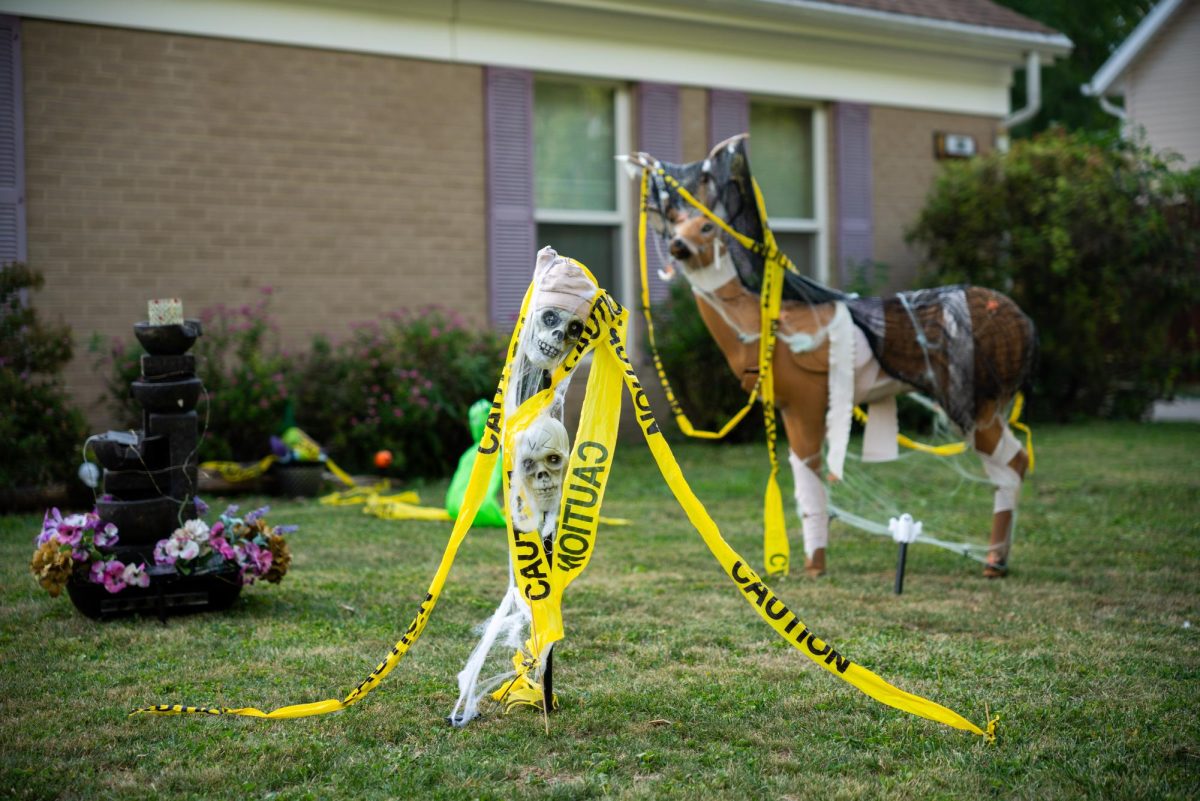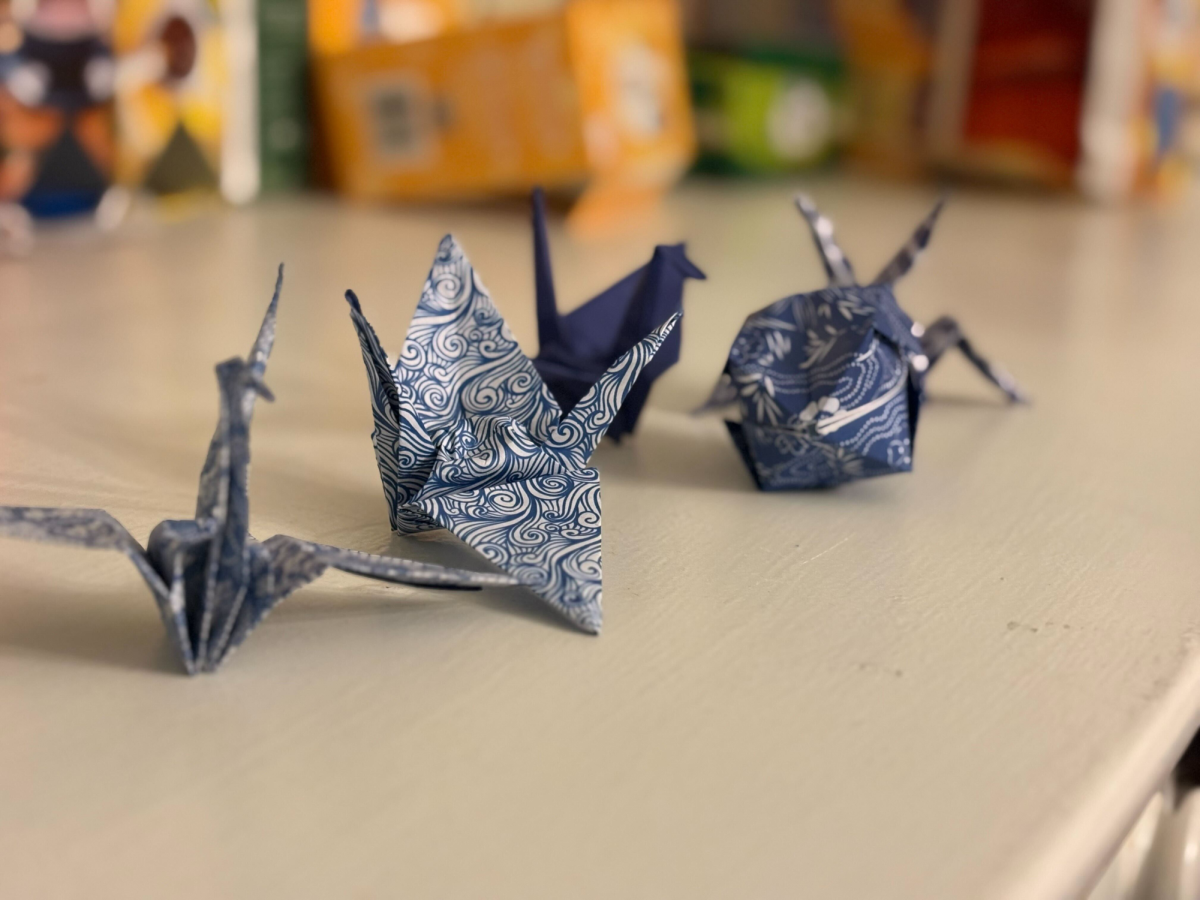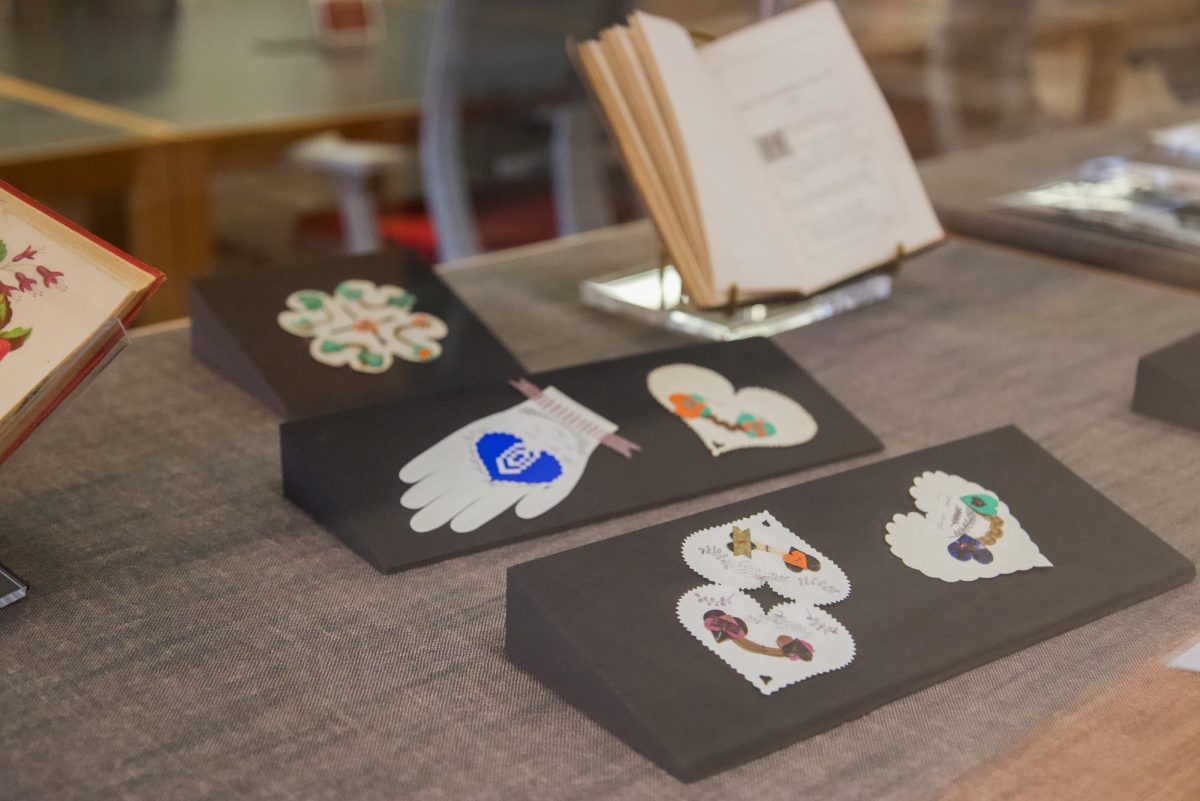With the air growing colder and the leaves growing redder, the mist of October is finally creeping into Oberlin. Halloween grows closer, and plenty of students are preparing to be in an appropriately spooky mood. If you ask, you’ll hear whispers of the ghosts that haunt Tank Hall and Johnson House; the basement of Noah Hall alone feels like something out of a Saw film. Sifting through older Oberlin blog posts and The Oberlin Review articles, it’s easy enough to find descriptions of encounters with apparitions or disappearing dead blackbirds. Even on a liberal arts college campus, the supernatural and the uncanny seem to pervade the air. Just ask the students!
College third-year Camille Thorp is the instructor of StrangeCo, an ExCo exploring everything related to urban legends and cryptids in nature. Her extensive knowledge comes from a childhood preoccupation. Growing up, she was fascinated by found footage videos on YouTube of alleged ghosts, and in college, she began some of her own research into haunted Oberlin locations for a class project.
“One of the more interesting factors to me is the human element — the folklore and retelling of stories,” Thorp said. “Last year at Oberlin in my American Gothic class, we were asked to make a creative project. I took this opportunity to become an amateur paranormal investigator, and I looked into hauntings on campus.”
Thorp began her paranormal investigations in Tank Hall. Over a century ago, Oberlin was rife with missionary activity. The Clara Tank Home for Missionary Children, now Tank Hall, was built in the 1890s as a place for the children of the missionaries, who were in China, to stay in. Thorp explained that the memorial arch in Tappan Square, dedicated to those who died in the Boxer Rebellion, includes the names of missionary children who were with their parents in China. Although she was told by her professor that 40 of the missionaries’ children died in a fire in Tank Home, Thorp noted that she could not find any evidence of this in news records or online.
“There were many mentions of fires in Oberlin, … but they were all like, ‘Oh, [there was] a small fire in the Science Center, but we put it out,” Thorp said. “You’d think if 40 orphans died in a fire, that would be front-page material. If you know some of this information — maybe you live at Tank or have had this professor — you construct the ghosts in your head.”
Through her research, Thorp reconstructs the development of a ghost story, of local folklore. As people collect and share individual snippets, a larger narrative unfolds as information merges and branches off. Tracing these stories back to the Oberlin archive of blog posts, local newspapers, Review articles, and word of mouth reveals a surprisingly human element to scary stories and tales of the supernatural: they are foundations of community.
College fourth-year and HorrorCo instructor Chloe Sinder and College third-year Mars Kennedy, a former student of HorrorCo, similarly share memories of childhood fears morphing into deeper interests to understand the things that scared them. For Sinder, internet creepypastas were the gateway into the world of horror media. Inspired by the incredibly popular Slenderman creepypasta, the video game Slender: The Eight Pages was especially frightening to her at the time.
“I couldn’t figure out how to quit the game,” Sinder said. “I went to my parents, and I was scared. They had to restart the computer to get it to close, and they told me I was not allowed to play it anymore.”
In a 2014 article from BBC, Justin Parkinson explains that Slenderman originated in 2009 on the web forum “Something Awful” as an entry in a creepy photoshop contest. The doctored photo depicted an unnaturally tall, blank-faced figure lurking behind a group of children. The post quickly went viral and inspired other internet users to contribute to the Slenderman mythos, creating an urban legend of varied and often contradictory lore. Like most folklore, this legend was mutable and often fused with news hoaxes that blurred the line between reality and fiction. For some, Slenderman merged with other popular creepypastas into a shared universe that became a core aspect of the internet horror community, especially with younger audiences.
“I think people wanted to combine all these stories that they loved into one universe that, in their minds, they would be able to escape to,” Sinder said. “One of my friends told me that the reason Slenderman was so long and thin is because he was killed on a stretcher in medieval times. I don’t know where all this has come from. I think folklore among children and the spreading of it is fascinating.”
What began as one bare-bones idea had fascinated people so much that it unfurled into something much larger and more complicated. Despite the creepy nature of the original photo, people felt compelled to expand the scope of its terror. Kennedy suggested that engaging with these fears through media is a way for people to better understand them and find release.
“We create these stories that scare us,” Kennedy said. “I think the thing that is so satisfying about [horror movies] for a lot of people is that they allow you to put a face to that nebulous fear. By making it something tangible, it allows people to conceptualize what they are afraid of in a way that helps them get to the root of why [something] in particular might be scaring them.”
Similar to Thorp, Kennedy believes that these fears can translate into the act of communal storytelling. A few mysterious noises or strangely shaped shadows can become a much grander tale as students fill in the gaps. One person’s story transforms into a shared experience. As the Sci-Fi Hall — housed in Noah Hall — archivist, Kennedy is interested in tracing the origins of the hall’s ghost, Miriam, a haunted bust in the lounge.
“She’s been with the hall since anyone can remember.” Kennedy said. “One of the things about Sci-Fi Hall is that, because we’re the longest-running [themed] dorm hall on campus, we have a bunch of traditions, and Miriam the hall ghost is one of them. If you go on our Discord, you can see she’s the administrator.”
While the origins of Miriam are somewhat foggy, she stands as a symbol of the power of the stories that we create together. Like any long standing institution, Oberlin has connected many people, and it is natural for them to find ways to tie their experiences together into a unified whole. It forges connections between the past and the present, keeping memories alive for new generations to step into. The things that scare us are so innate, acting as reminders of how, despite everything, we are all alike in some way. October is the perfect time to pay homage to the creatures that transgress, cross boundaries, and continue to terrify us.
“[I’m] learning to love monsters because we created them, after all,” Thorp said.












